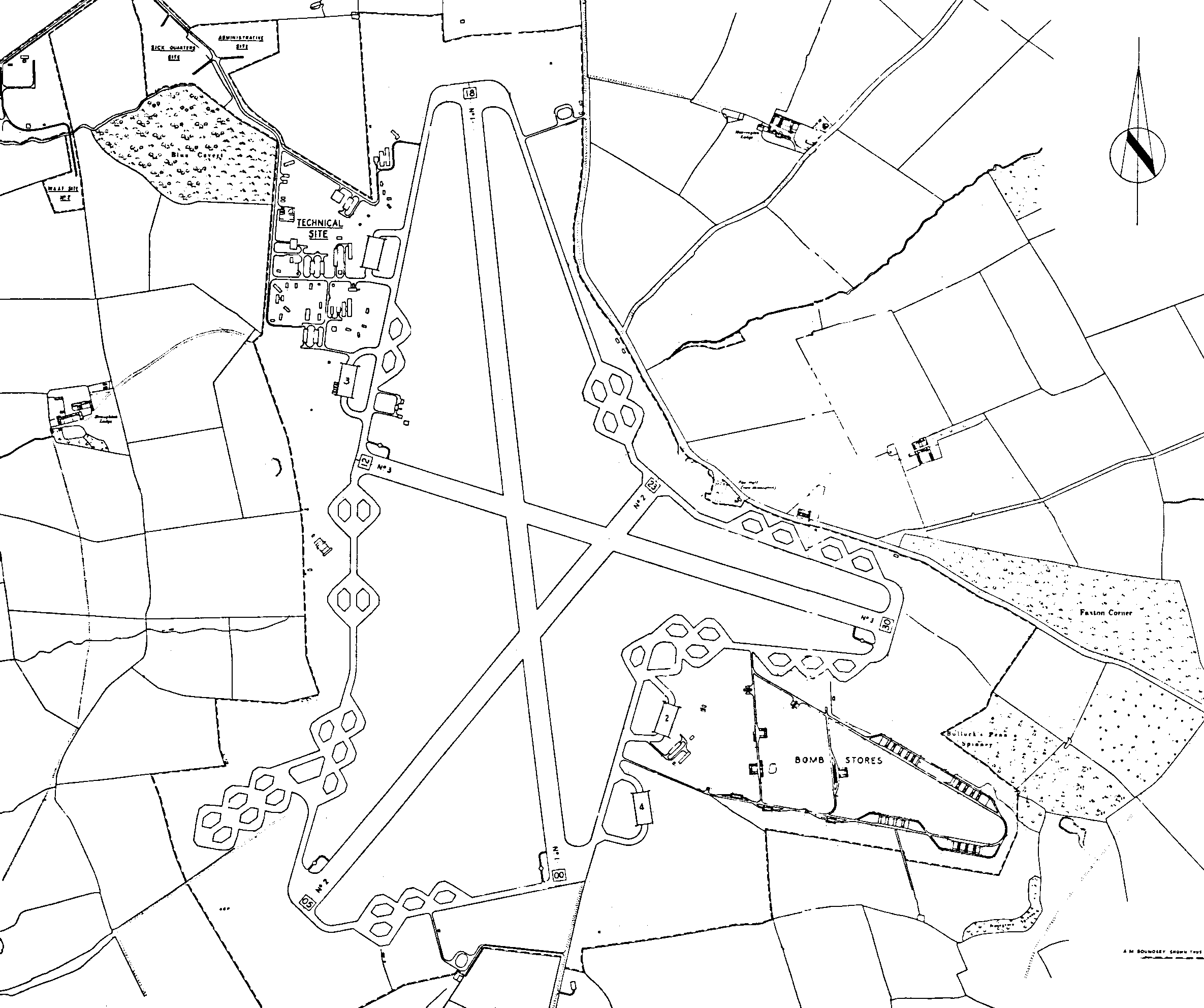
Harrington airfield, known as Station 179 during WW2, was built by the 826th and 852nd Engineer Battalions of the US Army as a Class A airfield intended for heavy bomber use, the main runway length being approximately a mile. Construction started on the 11th July 1942 by a battalion of aviation engineers who were subsequently alerted and sent to the North African Theatre of Operations. The two other engineering battalions carried on the work. The airfield was completed in the spring of 1944.
Approximately 860,000 square yards of concrete were laid, with one and three quarter million bricks being used, 210,000 cubic yards of soil being moved and 6 miles of roadway formed.
It took four engineering soldiers under the command of a corporal to complete a standard 16 ft by 18 ft Nissen Hut in two days. Eighty man hours were used (originally 225 hours per hut had been allocated).
Although this airfield had initially been constructed for use by a B-17 Flying Fortress Bomb Group, this group was diverted to North Africa to support Operation Torch. It was therefore taken over as a satellite station for training the bomber crews of the nearby RAF 84th Operational Training Unit at Desborough who mainly operated Wellington bombers. The following account of the hand over of the airfield has been taken from the Operations Record Book of No 84 OTU, Desborough
At 1415 hrs a RAF wing comprising of the Harrington personnel and a contingent from RAF Desborough marched to the Assembly Point on the North/South runway under the command of Wing Commander P.D.S. Bennett DFC, Officer Commanding RAF Satellite Harrington, whilst the 852nd Engineer Aviation Battalion was taking up its position. Both Units were then handed over to Colonel Landaker USAAF who took charge of the parade. At 1500 hrs the RAF wing and the 852nd Engineer Aviation Battalion marched in column past the Saluting Base to the music of their respective bands. The RAF wing was followed by a motorised section of the 852nd Engineer Aviation Battalion. On resuming their position on the parade ground Major General Lee USAAF made a brief speech as Master of Ceremonies, this was followed by the Invocation delivered by Chaplain W.B. Morton of the USAAF.
In token of the democratic aim for which they were fighting Private Harry A. Downs of the 852nd Engineer Aviation Battalion then handed over the Airfield with the good wishes of his Battalion to AC2 Anthony H. Wright of the RAF who acknowledged it in a brief speech of thanks. Lt General I.C. Eaker then formally presented the airfield and in doing so stressed the mutual objective of the two forces, which was to bomb Hitler until his war machine collapsed. He also reminded those present that Britain had already placed at the disposal of the American Air Corps more than 100 airfields. In formally accepting this token of the co-operation of their American Ally, the Air Officer Commanding-in-Chief Bomber Command spoke of the purpose of the airfield, which was to train skilled aircrews to break the enemy’s means and will to war, to emasculate every centre of his production. He warned that whilst they were well on the way to achieving this the war was a race, Victory the prize, but not to the man who eased up and looked over his shoulder during that race.
At 1535 hrs all stood in salute to the strains of the National Anthems of the two Nations. As the music ceased three Wellington aircraft from RAF Desborough flying in formation, dipped in salute. To bring the ceremony to a fitting conclusion Squadron Leader Donald M. Knight of the Chaplains Branch RAF read a Benediction.
The AOCIC Bomber Command, accompanied by the AOC No 92 Group with Lt General I.C. Eaker, Major General Lee and Brigadier General Moore then made an inspection of the airfield, after which they took tea in the RAF Officers Mess. The AOCIC was later escorted to his plane by W/Cdr P.D.S. Bennett DFC and took off at 1647 hrs. Lt General I.C. Eaker with Brig General Peck departed by plane at 1652 hrs. At 1700 hrs General Lee left the Mess and was accompanied to his private train at Lamport by Air Vice Marshall H.K. Thorold CBE DSC DFC AFC, Group Captain G. Lowe DFC AFC and Wing Commander P.D.S Bennett DFC.
Being some 500 ft above sea level and located not too far away from the supply bases of Cheddington and Holme as well as the British SOE based at Tempsford, Harrington was chosen for the Carpetbagger Operations by the Eighth Air Force’s Special Operation Group. These operations being to deliver supplies and OSS agents into occupied Europe to support local Resistance units. The advance echelons of the 36th and 406th Bomb Squadrons moved into Harrington on the 25th March 1944. These squadrons were to form a new Bomb Group known as the 801st Provisional Bomb Group (H).
The Station was officially handed over to the new Commanding Officer, Lt Col Clifford Heflin, by Squadron Leader E. D. King, RAF, on the 1st May 1944. Later in the month two more squadrons were attached to the 801st Group, these were the 788th from Rackheath and 850th from Eye who had been sent to Cheddington for initial training in Carpetbagger operations before moving to Harrington.
In addition to the planes and their crews support groups at Harrington included: HQ and 352nd Air Service Squadron, 39th Service Group; HQ 328th Service Group; 35th Station Complement Squadron; 1077th Signal Company; 1561st Ordnance S&M Company; 1094thQuartermaster Company; 1139th Military Police Company; 2132nd Engineer Fire Fighting Platoon and Detachment “O” 1020th Chemical Company.
Carpetbagger operations at Harrington peaked in June and July of 1944 as Operation Overlord became a reality in France. For the month of July 1944, the four squadrons at Harrington supplied resistance forces with 5,043 containers, 3,015 packages, 1,540 bundles of leaflets and 69 “Joes” or agents and 7 pigeons. The total of 424 successful sorties was the highest achieved in a single month during the life of the project.
On the 13th August 1944 the Carpetbaggers at Harrington were re-designated as the 492nd Bomb Group (H) and the four squadrons became the 856th, 857th, 858th and 859th Bomb Squadrons under the Commanding Officer, Col Clifford Heflin. On the 26th August 1944 the command was transferred to Colonel Robert Fish, Colonel Heflin returning to America.
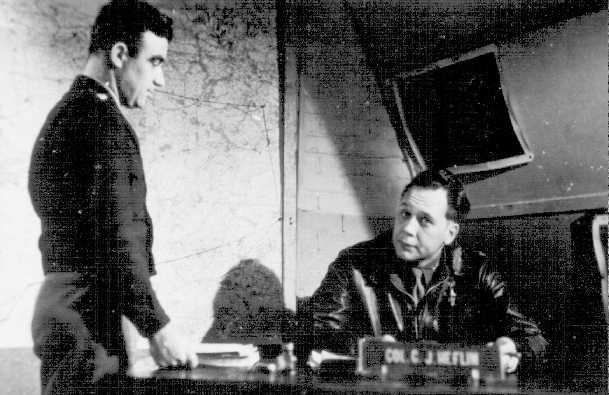

Despite these organisational changes August was not far behind July with 350 successful sorties, delivering 243 “Joes”, 4,066 containers, 1,580 nickels and 2,306 packages, but by then the tide had begun to turn. When Carpetbagger operations at Harrington came to a practical end on the night of 16/17th September 1944, the 492nd BG had completed 335 sorties for the month.
Due to General Patton’s fuel supply problem in France it was decided that the Carpetbagger’s B-24 Liberators should be used to fly gasoline directly to forward airfields. Between the 21st and 30th September 1944 822,791 gallons of 80 octane gasoline were flown out from Harrington on ‘trucking missions’ to three separate airfields in France and Belgium. This operation contaminated the fuel tanks of a considerable number of the B-24s and resulted in their condemnation as beyond repair.
In September 1944 the 8th Air force High Command decided that as supply missions would inevitably gradually run down the 492nd Group would prepare three squadrons for the night bombing role leaving only one squadron (the 856th BS) to carry out supply missions on behalf of the OSS. These transitions however proved to be difficult due to the many modifications that had been made to the B-24 aircraft for their Carpetbagger role, which had included the removal of oxygen equipment and some armament.
On 17th December 1944 Colonel Hudson H. Upham assumed command of the 492nd Bomb Group with night bombing and supply dropping operations continuing.
In January 1945 the 859th Bomb Squadron were transferred to the 15th Air Force and operated Carpetbagger type missions from Brindisi in Italy.
On the 27th February 1945 a Spitfire Mk IXE, serial number MA814 of No. 303 Kosciuszko Fighter Squadron based at Coltishall, Norfolk, was returning from a routine patrol when its Polish pilot, Flight Sergeant Klemens Prusak, decided to land on the American airfield at Harrington and obtain some much prized American cigarettes and candy from the base’s PX store. Douglas D. Walker recounted his memories of this incident when he revisited the airfield in 1987:
It was a sunny morning in February 1945 when I was strolling to the mess with a few friends to have lunch. We noticed an English Spitfire plane landing on the runway nearby (this did not surprise us, many English pilots landed at our base to purchase American cigarettes and candy bars) The pilot hopped out, strolled in our direction, and stopped to chat to us. He was a member of the Free Polish Airforce and was just finishing his training. We invited him to join us for lunch.
During lunch we learned how, as a child he fled from the Germans when they had invaded his country and how he had waited impatiently to be old enough to join the Free Polish Airforce so that he could “fly Messerschmitts”. As we parted company he told us to watch him, he was going to perform a “fly over” and show us some “fancy flying”. We watched as he skilfully threw his Spitfire into a series of aerobatics until, in horror, we saw him dip too low to the ground. A wing ripped through a nearby tree, then the plane smashed into the Finance Hut and dug a hole into the ground near us. We ran to help him but there was nothing we could do. We watched helplessly as he was pronounced dead by the medics. Fortunately the loss of life was not greater as the two men who were normally in the Finance Hut were in the mess hall when the accident happened.

Sgt. Klemens Prusak

Burning remains of F/Sgt Prusaks Spitfire

Debris trail adjacent to the Finance Hut
The remains of F/Sgt Klemens Prusak, service no. P-782599, born 22.11.14 and died 27.2.45 were buried in the Newark-upon-Trent Cemetery, Nottinghamshire.

F/Sgt Prusak’s Grave at Newark Cemetery
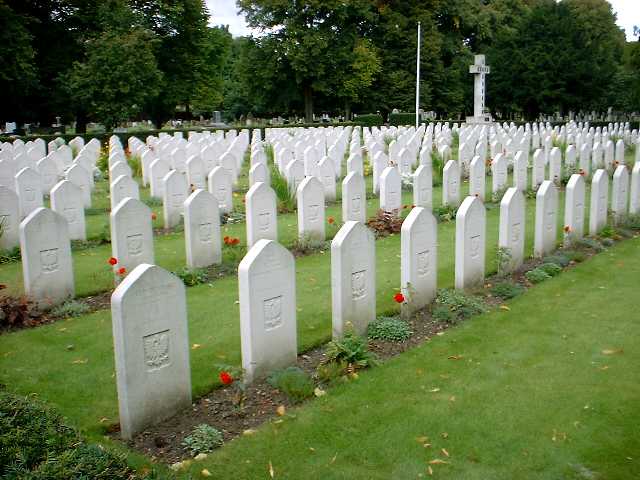
The Polish War Graves at Newark Cemetery
The Northants Aviation Museum Society has reconstructed a Nissen hut on the site of this Finance Hut on the administration site of the airfield and it now houses their museum. The site of the Spitfire crash being in the field where the main car park for the museum is now located
On the 14th March 1945 the 406th Night Leaflet Squadron moved from Cheddington to Harrington and operated there until the 28th June 1945 with 20 aircrews along with their B-17 Flying Fortress and B-24 Liberator aircraft
In addition to the B-24 Liberators the 492nd BG also used C-47 Dakotas, A-26 Invaders and British built Mosquitos. These Mosquitos were fitted with wire recording machines and were used in Red Stocking missions to record radio messages from agents in Germany and Austria. It was not unusual therefore for there to be in excess of 60 operational planes on the airfield at any one time

A-26 Invader Queen of Spades at Harrington 1945

Mosquito TA 614 used at Harrington as a training aircraft

Afternoon lineup at Harrington (photo taken from the small arms range butts looking south)
The 492nd BG at Harrington continued supply dropping, bombing and Red Stocking missions until the 7th May 1945 when Germany finally surrendered.
On the 7th July 1945 the air echelon of the 492nd BG left Harrington for Kirtland Field, Albuquerque, USA where they later joined up with the ground echelon who had travelled back to the USA by the ocean liner Queen Elizabeth. The Group being deactivated on the 17th October 1945.
Following the withdrawal of the Americans Harrington airfield then fell into a period of disuse when it was held on a care and maintenance basis.

In those days the RAF Maintenance Units (now called Supply Depots) were responsible for receipt of equipment from manufacturers and its storage until required by Squadrons and other units. When no longer required by such units, their equipment was returned to the appropriate Maintenance Unit. After the war this was returned at such a rate that the massive Maintenance Units could no longer cope and in consequence took under their wing a number of non operational aerodromes in order to use them in a storage capacity
During 1947 – 48 the No 25 Maintenance Unit Hartlebury, Worcestershire, had under their control the aerodromes at Harrington, Chelveston and Diss in Norfolk and into these a stream of Bedford lorries and Queen Mary low loaders delivered equipment until all suitable buildings were filled to capacity.
According to Colin Colleyshaw, the officer commanding at Harrington during this period, manning at Harrington were 40 airmen, 2 Corporals, 2 Sergeants, 1 civilian Clerk of Works and 1 Officer in charge. Quite a bit different to when it was an operational airfield during the war, then there were over 3,000 American servicemen on the base.
After the initial receipt of equipment from units closing down it was essential to classify it into equipment required by the RAF for future use, or equipment surplus to requirements which could be sent to the auctions being held at that time.
Gradually, as surplus equipment was auctioned, storage capacity in the Maintenance Units returned and equipment could be re-shipped to them and the sub-sites, as the aerodromes were called, were de-requisitioned and returned to farming, though in some cases retaining their runways and buildings for a number of years.
Although the airfield at Harrington again fell into disuse and had been returned to farmland, it received a new lease of life when it was selected to become one of the RAF’s Thor missile sites in the late 1950’s.

Three rocket launch pads, which still remain, with ancillary buildings were constructed. The whole area, being declared top security, was fenced off and floodlit. The IRBM WS-315A Thor missile system had a range of 1,500 nautical miles. The 60 ft long Thor missile was powered by a 150,000 lb thrust rocket engine fuelled by liquid oxygen and RP-1, a light cut petrol, and carried a 2 Megaton thermonuclear warhead. Deployment of these missiles commenced in December 1958 and was phased out in 1963 with the advent of the manned V-bombers, the Valiant, Vulcan and Victor, along with an increased threat to fixed installations due to the improved accuracy of Soviet missiles.
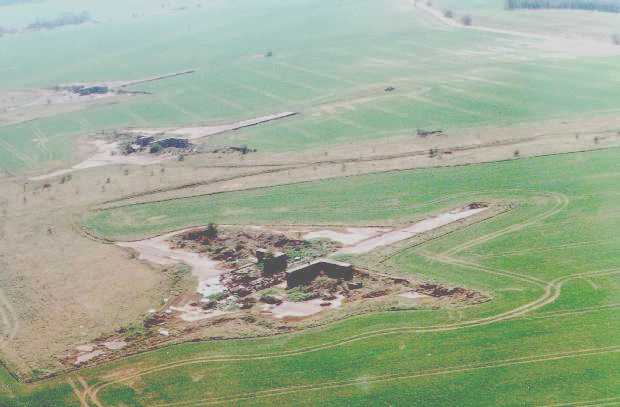
Aerial photo of Thor launch pads 1998

Thor Launch pad 2001

Thor Launch pads in 2001

Revetment ‘stores’ 2001. Pyrotechnic store on the left with the Classified warhead store on the right

After the Thor site was abandoned the buildings, runways and most of the roads and taxiways were demolished in 1965. The resultant hardcore forming the base of many other roads and buildings then under construction elsewhere at the time. The airfield once again returning to agriculture.

Wartime layout of Harrington airfield – Station 179

The memorial on the C-47 dispersal at the side of the Lamport – Harrington Road
In 1987, at a reunion of the Carpetbaggers, a memorial was dedicated to the memory of those who did not survive the war. This memorial is located on the site of one of the former aircraft dispersal points and depicts a Carpetbagger B-24 Liberator taking off in front of the Foxhall cottages alongside the airfield at Harrington.
In 1999 Colonel Fish and his wife Jean revisited Harrington and a memorial service was held on the airfield. In attendance were representatives of the USAF Special Operations Command from RAF Mildenhall, members of the Harrington Aviation Museum Society, Northants Aviation Society and many members of the public. After the wreath laying there was a flypast by a Talon Hercules of USAFSOC.
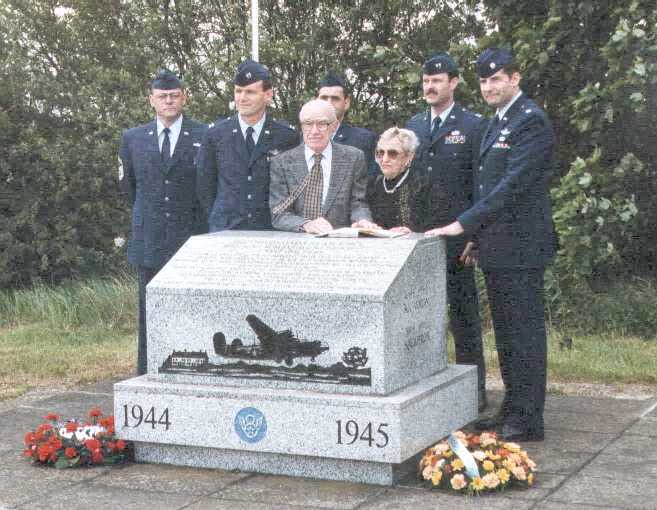
Although the foundations of some buildings can still be seen around the site of the airfield, the only remaining original substantial WW2 buildings left standing are on the former administration site. The Carpetbagger Aviation Museum is now housed in part of the original Operations Building at the airfield’s administration site.

Col. Robert W. Fish with his post war uniform at the Carpetbagger Aviation Museum

A “Joe” on display at the Carpetbagger Aviation Museum

